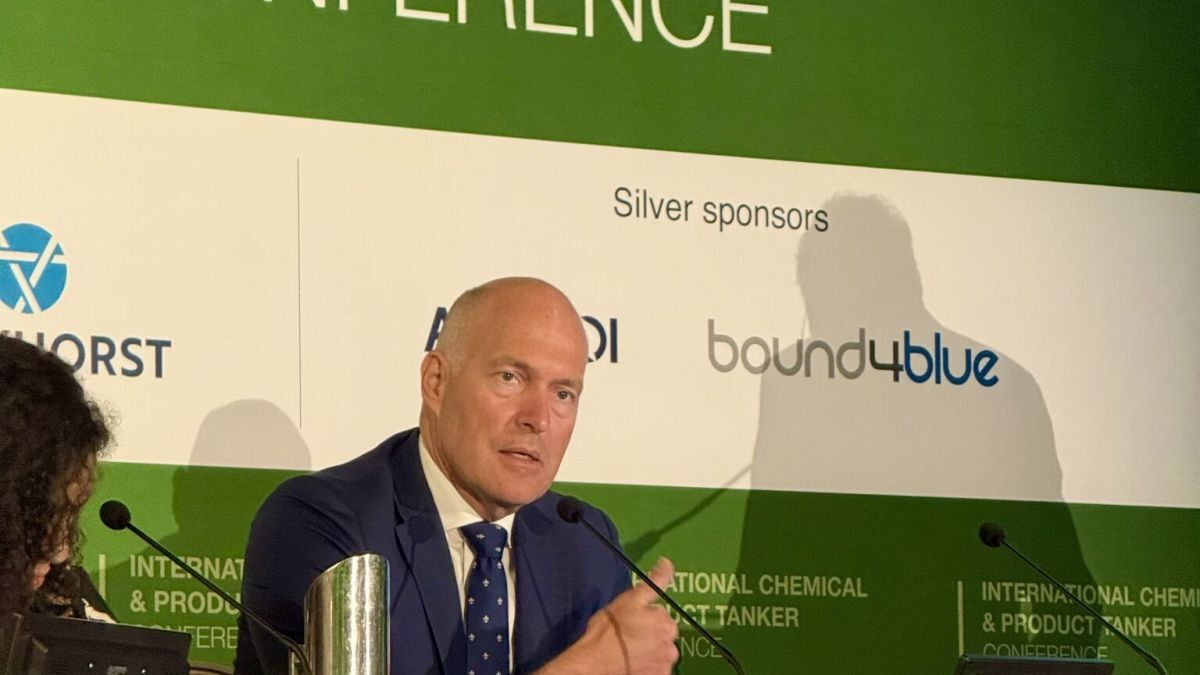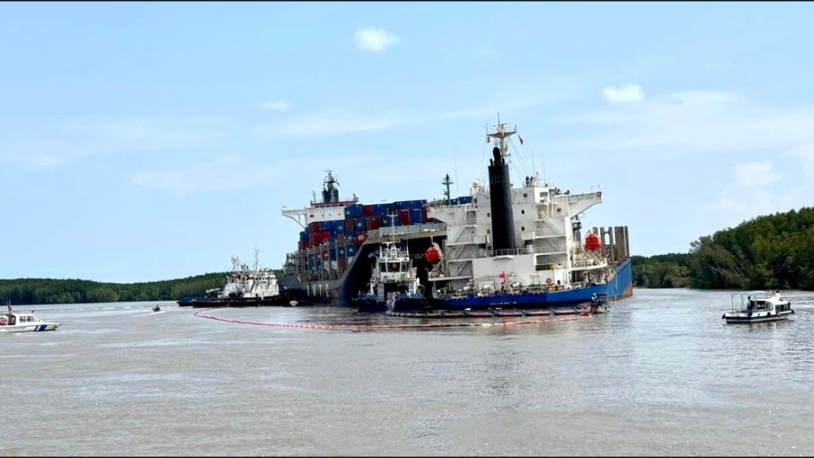Business Sectors
Events
Contents
Using software to reduce ship operating costs
Reducing fuel consumption has been a major concern for owners and operators in recent years due to rising fuel costs and the generally flat or depressed demand for seaborne freight. Those economic circumstances, coupled with regulatory initiatives such as Ship Energy Efficiency Management Plans (SEEMPs) and the Energy Efficiency Design Index (EEDI), have given the developers of fuel optimisation products, ship designers and suppliers of energy saving devices and systems very fertile ground for development over the last seven to 10 years.
Whether the falling price of bunkers will prove a sufficient incentive for some operators to abandon or reduce their fuel saving strategies remains to be seen. It is unlikely in the bulk segment, which is having a particularly tough time, but some observers see potential for liner operators to differentiate themselves by increasing speed. Maersk Line’s decision to pull the plug on its Daily Maersk service, on the grounds that shippers were not prepared to support the premium service, is at odds with views expressed recently by shippers and freight forwarders at the Trans-Pacific Maritime Conference in Long Beach, USA.
No owner deliberately wastes fuel whether running for his own account or, if the vessel is operating on a time charter, where the cost of fuel is for another to bear. In the first case, the benefit is for the owner’s bottom line and in the second, an efficient ship is an attractive ship for charterers and can command a premium hire rate. With that in mind, shipowners have not been slow in taking up the various fuel saving offerings even though the effect of some of them could possibly be matched by an experienced navigator using the information already available on board. If nothing else, the systems do permit comparisons between navigators’ performances and help identify best practices.
Although many of the software systems began as merely trim optimisation systems – enough in itself to save fuel – most have evolved into more complex and far reaching tools. One example is the ClassNK-Napa Green software, which has recently had a specialist version developed for liquefied natural gas (LNG) carriers. Gas carriers have a unique operational profile, complicated by their ability to use wastage, or boil-off, from the cargo as fuel for the transit. This puts vessel crews in the centre of a delicate balance between the interests of the ship operator and those of the cargo owner when reporting performance and efficiency.
To help square this circle, ClassNK and Napa developed a specialist solution for LNG carriers that ensures the transparent and accurate measurement of performance and efficiency, including measurement of the boil-off. The measurements are easy to interpret on board by the crew, as well as being remotely and automatically shared with shore-based reporting systems. These deliver vital data that can be passed between owner, operator and chartering cargo owner.
The LNG-specific software also provides effective and usable analysis of fuel consumption, trim, route, speed and operational efficiency. When bunker fuel prices fluctuate, the software optimises operations to fit the profile that makes the most commercial sense for all stakeholders. However, unlike standard ClassNK-Napa Green systems, the LNG version is tailored to take into account the various fuels used by LNG carriers – meaning it can adapt to provide the most accurate operational analysis depending on the fuel used.
Napa shipping solutions product manager Jouni Salo explained the merits of the system, saying: “With the influx of shale gas onto the market in recent years we have seen a boom in LNG carriers coming online. These vessels have complicated operational profiles and a range of stakeholders with a vested interest in operating them in the most commercially viable way.” He added that in developing this specialist performance monitoring solution, Napa and ClassNK are making it possible for transparent and easily-understood information to be automatically shared between crews, vessel owners, operators, charterers and cargo owners – providing much-needed assurance that the vessel is operating at the most economically viable profile.
In addition, the performance monitoring system is able to fully integrate with Napa’s existing gas tanker loading computer, which is installed on a quarter of the global LNG carrier fleet. “The integration of this system with performance monitoring is the first of its kind. It will enable all involved to ensure safe, efficient and optimum end-to-end operations, and will provide a full 360 degrees view of the operation of these vessels,” Mr Salo said.
Another system that has evolved over time is Amarcon’s Octopus-Onboard, which started out as a dynamic weather monitoring system more than a decade ago. Now the various modules that make up the suite can work together, enabling vessel operators to optimise trim, conduct weather routeing, and select the constant engine revolutions that are needed to meet a particular arrival time. Amarcon became part of the ABB group some three years ago.
In March, Amarcon was contracted to deliver Octopus-Onboard fuel monitoring systems for 12 Handysize bulk carriers of Shanghai Merchant Ship Design & Research Institute’s (Sdari’s) Green Dolphin 38 design. These were being built by Yangzhou Guoyu Shipbuilding Co in China for Singapore-based owner Pioneer Marine. The Octopus-Onboard fuel monitoring system comprises Coriolis flow sensors, a Torductor torque measurement system and a software solution. It offers wave measurements, weather forecasts and navigation data such as speed, course, engine revolutions and the voyage plan, as well as ship characteristics, loading conditions and motion sensor measurements. Octopus-Onboard is capable of providing significant fuel consumption indicators to the vessel’s crew and its onshore operations department by sending sensor-measured data to the software.
Pioneer Marine president and chief executive Pankaj Khanna said: “The Octopus-Onboard advisory system complements the Green Dolphin newbuild design and introduces a new dimension to ensuring optimal fuel efficiency. Accurate advice based on the sensor-measured information enables the crew to operate the vessel in the most fuel efficient manner, thus reducing our carbon footprint.”
One fuel optimisation initiative that includes trim adjustments is Jotun’s Hull Performance Solutions (HPS). It was designed for quantifying fuel savings achieved by the choice of hull coatings. Early this year Jotun announced that Mediterranean Shipping Co (MSC) was to expand its use of HPS after a successful pilot programme that resulted in fuel efficiency gains and reduced CO2 emissions (Marine Electronics & Communications February/March 2015).
Another recent initiative is also concerned with the effect of hull fouling. DNV GL has launched an advanced hull and propeller performance analytics module as part of the new fleet performance management service Eco Insight. The module is based on computational fluid dynamics (CFD) methods to make corrections for changing operational conditions, and is claimed to produce much more accurate results than existing approximate or experimental methods.
Tracking hull and propeller degradation, which can affect fuel efficiency, is a challenge for which an adequate solution has not yet been found, says DNV-GL. Experts suggest that, as a result of hull fouling, the world fleet could be sailing with approximately 30 per cent added resistance and consequently significantly higher levels of fuel consumption. Undertaking hull and propeller cleaning on a more regular basis is already recognised by many shipping companies as a means of improvement. However, the question of when and how the procedure should be carried out has not been addressed systematically.
Hull and propeller performance computations show how much resistance is added over time due to fouling by analysing the gap between the theoretical and the measured power demand of a vessel, after correcting for influences such as speed, draught, trim, weather and other operating conditions. “We use data that shipping companies are already collecting,” Torsten Büssow, DNV GL’s head of fleet performance management, explained. “Our CFD capabilities, which we also use in our hull line optimisation, retrofit and trim assistant services, allow us to very accurately normalise vessel specific power demand under each reported condition.”
Saving costs during fuel switching
Since the beginning of the year, ships entering emission control areas (ECAs) have been obliged to change over from heavy fuel oil (HFO) to a compliant low-sulphur fuel, unless they have gas scrubbing systems to extract the sulphur. As well as the hazards of fire and engine failure that are inherent in the change-over process, there can be financial repercussions due to excessive consumption of expensive ECA-compliant fuel, if the process is not managed properly.
Two classification societies, Korean Register (KR) and DNV GL, have developed tools to aid the change-over process, with both emphasising their solutions’ fuel saving potential. KR’s new software assesses fuel consumption at actual operating speed to calculate the time that is required to completely switch to a low sulphur fuel. DNV GL’s offering comes in the form of a publication entitled Sulphur Limits 2015 – Guidelines to ensure Compliance and a fuel change-over calculator, both of which can be downloaded.
When announcing its new fuel oil change-over (FOCO) software, KR said that the current practice when changing fuels on entry to an ECA is generally to rely on the experience of the chief engineer. It has found that this often results in the vessel burning more of the expensive low sulphur fuel than is necessary. The new software gives much more accurate timings that will save fuel and cost. The software also provides accurate technical data that can be used to report to port state control if change-over times are questioned.
KR’s chairman and chief executive Park Bum-shik said: “As a professional engineering service provider, we have developed a variety of technical solutions to help our ship operating customers achieve fuel economy. This software program comes at a time when the shipping community is working hard to comply with strict environmental controls and is part of a range of tools we are developing to help our customers and stakeholders.”
In its new publication DNV GL experts explain the problems associated with change-overs and offer advice. Its tool is the Fuel Change-Over (FCO) Calculator. “Taking into account variables such as a vessel’s fuel system layout, any constraints on temperature and the variable sulphur content of fuels, the FCO Calculator can significantly reduce the risk of human error during preparation of the change-over process,” said Jörg Lampe, DNV GL senior project engineer for risk and safety and systems engineering.
The DNV GL software uses a complex numerical simulation that is said to be more accurate than previous linear models and provides insight into the optimised lead time for the change-over process, its costs and the maximum hourly consumption. “This kind of data ensures a cost-efficient, reliable fuel change-over and can also help demonstrate compliance for the respective authorities,” Mr Lampe added. MEC
Related to this Story
Events
Maritime Environmental Protection Webinar Week
Cyber & Vessel Security Webinar Week
The illusion of safety: what we're getting wrong about crews, tech, and fatigue
Responsible Ship Recycling Forum 2025
© 2024 Riviera Maritime Media Ltd.












